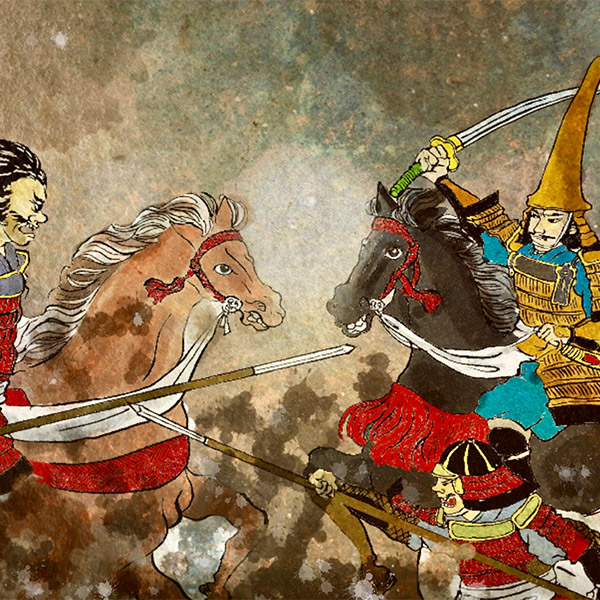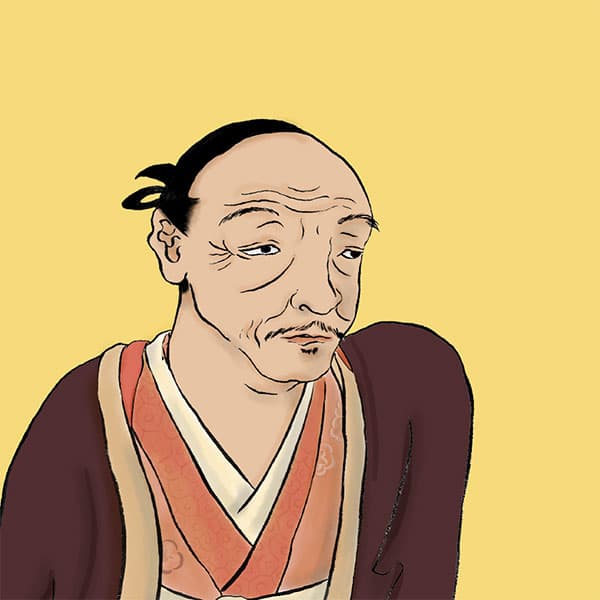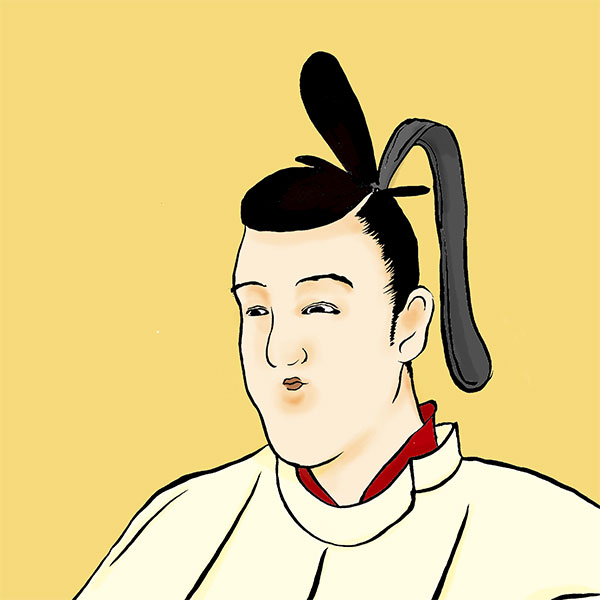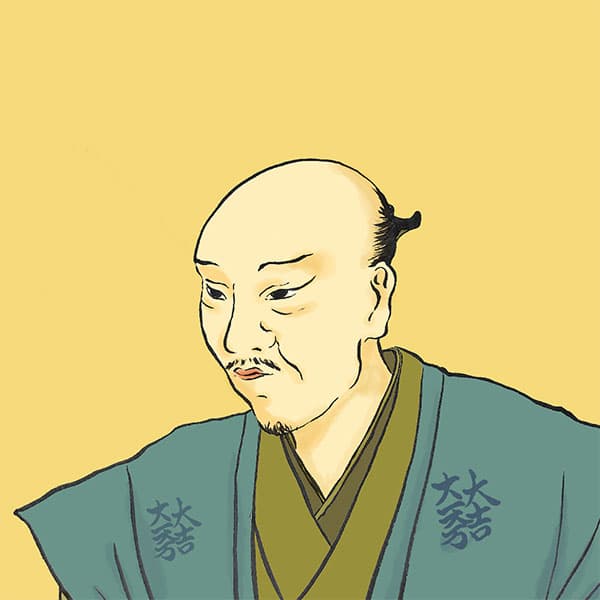Battle of Asainawate (1/2)Sekigahara in Hokuriku, Toshinaga Maeda VS Tanba Ju

Battle of Asainawate
- Article category
- case file
- Incident name
- Battle of Asainawate (1600)
- place
- Ishikawa Prefecture
- Related castles, temples and shrines

Kanazawa Castle

Komatsu Castle
In September 1600, the Eastern Army led by Tokugawa Ieyasu and the Western Army led by Ishida Mitsunari clashed at Sekigahara (now Sekigahara Town, Gifu Prefecture) in the Battle of Sekigahara. Did you know that at the same time, battles between the Eastern Army and the Western Army were taking place in areas other than Sekigahara? One of these was the Battle of Asainawate. About a month before the Battle of Sekigahara, the battle fought between Toshinaga Maeda of the Eastern Army and Shige Tanba of the Western Army at Asainawate (Komatsu City, Ishikawa Prefecture) was a prelude to the Battle of Sekigahara. Toshinaga is the son of Toshiie Maeda, and Nagashige is the son of Hide Tamba. In other words, the second generation of Oda family vassals were divided into allies and enemies and fought each other. This time, we will take a closer look at the Battle of Asainawate, which is known as the ``Sekigahara of Hokuriku''.
After the death of Toyotomi Hideyoshi, Tokugawa Ieyasu rose to power.
To explain the Battle of Asainawate, we need to go back to August 18, 1598, when Toyotomi Hideyoshi died. After Hideyoshi's death, the conflict between Tokugawa Ieyasu, the Five Elders, and Ishida Mitsunari, the Five Magistrates, deepened. Ieyasu was asked by Hideyoshi to help his successor, Toyotomi Hideyori, and took advantage of the fact that Hideyori was only 6 years old. Furthermore, despite Hideyoshi's prohibition of unauthorized marriages among feudal lords, he ignored this and adopted his own adopted daughter with the adopted children of Nagamasa Kuroda, Kiyomasa Kato, and Masanori Fukushima, leading to conflict with Mitsunari. We proceeded to form relationships with feudal lords.
Opposing this was Hideyoshi's ally, Toshiie Maeda. Although his stone height was lower than that of Ieyasu, he was an important figure trusted by military commanders in the Toyotomi government due to his honest personality, and he also served as Hideyori's fief. Mitsunari relied on Toshiie to fight against Ieyasu, and Ieyasu also respected Toshiie. Even when Ieyasu's marriage policy led to a situation with Mitsunari, many feudal lords followed Toshiie as Toshiie sided with Mitsunari, and Ieyasu decided to make peace. Toshiie was the only person who could stop Ieyasu from running on his own.
However, on Leap March 3, 1599, Toshiie died of illness, following in Hideyoshi's footsteps. He was succeeded by his eldest son, Toshinaga Maeda, who took over the positions of Godairo and Hideyori's fief. At this time, Toshiie made a will stating that he should not leave Osaka for three years, but Toshinaga returned to Kanazawa for some reason. The Santsubomonsho, a comprehensive history of the Kaga domain compiled in the middle of the Edo period, says that it was because Ieyasu recommended it, but the exact reason is not known.
The month after Toshinaga returned to Kanazawa, Nagamori Masuda, one of the five magistrates, falsely accused Ieyasu that Toshinaga and Nagamasa Asano, one of the five magistrates, were trying to kill Ieyasu. Furthermore, he even suspected that Toshinaga was having an affair with Yodo-dono and that he would become Hideyori's guardian after the two got married and became husband and wife. It is said that this slander led Ieyasu to decide to conquer Kaga. However, there is some suspicion that it was actually Ieyasu's own production.
Toshinaga was panicked by Ieyasu's move. Opinions were divided within the Maeda family as to whether or not to fight against Ieyasu, but in the end Toshinaga chose not to fight and sent his senior vassal Nagatomo Yokoyama to explain to Ieyasu. As a result, the Kaga conquest was avoided. Furthermore, according to the arrangement at this time, Toshinaga decided to send his mother, Shunpoin (Matsu), to Edo as a hostage. Ieyasu, on the other hand, promised to marry Hidetada Tokugawa's daughter, Tamahime, to Toshitsune, the fourth son of Toshiie Maeda, in exchange for taking hostages.
Having sealed off the Maeda family in this way, Ieyasu then began targeting Kagekatsu Uesugi in Aizu (Fukushima Prefecture). Kagekatsu began construction of Kamizashi Castle in March 1600 with the aim of strengthening his military, and also plotted to recapture his former stronghold of Echigo (Niigata Prefecture), causing a revolt among the local samurai of Echigo. He was working behind the scenes. In addition, Kagekatsu's subordinate, Kanetsugu Naoe, was close to Mitsunari, so Kagekatsu was Mitsunari's person.
Hideharu Hori, who ruled Echigo, objected to Kagekatsu's move and reported it to Ieyasu. Ieyasu sends a messenger to ask Kagekatsu to go to Kyoto if he is not planning a rebellion, but in response, Kanetsugu responds with a ``Letter of Naoe'' that sarcastically denies the suspicion of rebellion. . Ieyasu was enraged by the contents of the letter and decided to subjugate Uesugi (conquest of Aizu). However, this Naoe letter no longer exists, only a copy remains, and its authenticity is still debated.
In June 1987, Ieyasu greeted Toyotomi Hideyori at Osaka Castle and departed for Aizu, accompanied by Tadakatsu Honda, Naomasa Ii, Masanori Fukushima, Nagamasa Kuroda, Kazutoyo Yamauchi, and others. They arrived at Edo Castle on July 2nd and began preparations for the conquest of Uesugi.
Mitsunari Ishida's raising of arms and Yoshitsugu Otani's secret maneuvers
When Tokugawa Ieyasu headed east, Ishida Mitsunari, who was left behind, strengthened his anti-Ieyasu movement and finally raised an army. In July, he invited his ally Yoshitsugu Otani to Sawayama Castle (Hikone City, Shiga Prefecture) and proposed to overthrow Ieyasu. Yoshitsugu was a subordinate of Toyotomi Hideyoshi, and had military talent that made Hideyoshi say, ``I'd like to entrust an army of 1 million men and let him lead a battle.'' He is a close friend of Mitsunari. He is known to have suffered from a serious skin disease, but when Yoshitsugu spilled pus into his teacup at a tea ceremony, Mitsunari was the only one who wanted to drink the tea, while other military commanders ignored him. I still have an episode where I felt this.
In fact, Yoshitsugu was planning to join Ieyasu in his conquest of Uesugi. For this reason, Yoshitsugu persuaded Ieyasu to stop Mitsunari due to his high military power. Yoshitsugu went so far as to flatly declare that ``Mitsunari is impossible because he has no popularity,'' but Mitsunari was firm in his resolve, and in the end, Yoshitsugu accepted Mitsunari's determination and decided to join the Western Army. After a meeting at Sawayama Castle, Terumoto Mori was appointed as the commander-in-chief, and the Western Army took shape.
At this time, Toshinaga Maeda joined Ieyasu's eastern army, who was holding Shunpoin hostage. In fact, when Toshinaga was asked by Ieyasu to participate in the conquest of Uesugi in May, he consulted Yoshitsugu about how to deal with it, partly because of his relationship with him when he took Shunpoin hostage. Afterwards, Yoshitsugu, who opposed Ieyasu, proposed to Toshinaga with other military commanders, ``We would like to give you seven northern countries if you join the Western army.'' Toshinaga is said to have been furious, saying, ``I had no choice but to take my mother hostage and obey Ieyasu, and now you want me to go against Ieyasu and abandon my mother!''
On the other hand, Yoshitsugu was known as Kazunori Aoki of Hokusho Castle (Fukui City, Fukui Prefecture) and Munenaga Yamaguchi of Daishoji Castle (Kaga City, Ishikawa Prefecture), etc. We succeeded in recruiting a large number of military commanders in the southern part of Ishikawa Prefecture. One of the military commanders who sided with the Western army at this time was Shige Tanba, the main character of the Battle of Asainawate. He was the eldest son of Nagahide Niwa and the lord of Komatsu Castle (Komatsu City, Ishikawa Prefecture), a military commander who owned 125,000 koku.
After preparing his western army, Mitsunari first attacked Fushimi Castle, which was defended by Mototada Torii, a vassal of Ieyasu (Battle of Fushimi Castle). The battle, which began on July 19, dragged on due to Mototada's fierce resistance. In fact, Ieyasu originally viewed Fushimi Castle as a ``discarded stone,'' and Mototada continued to resist with all his might, even though he was convinced that he would die in battle. The war ended on August 1st, but the Western army was stranded.
On the other hand, Ieyasu called off the Uesugi conquest and held a military council (Koyama Hōsei) at Oyama Castle in Shimotsuke Province (Tochigi Prefecture) to decide on future measures. He then left his second son, Hideyasu Yuki, at Utsunomiya Castle as a precaution against Uesugi, and arrived at Edo Castle on August 5th. After that, preparations for subjugating Mitsunari will proceed.
Yoshitsugu Otani, a wise general who stands up to Maeda Toshinaga's raising of an army
During the Battle of Fushimi Castle, war also begins in Hokuriku. On July 26th, Maeda Toshinaga set out from Kanazawa Castle (Kanazawa City, Ishikawa Prefecture) with 25,000 soldiers and besieged Komatsu Castle where Tanba Shige was located. Komatsu Castle is an impregnable "water castle" that was built on a wetland and is surrounded by multiple water moats that utilize water from the nearby Hashikawa River. Moreover, Tanba Shige himself is holed up inside with 3000 soldiers. Believing that it would take time to capture the castle, Toshinaga avoided Komatsu Castle, and on August 2nd laid siege to Daishoji Castle, where Munenaga Yamaguchi and his son Nobuhiro were located. Munenaga and Nobuhiro fought bravely with only 500 (2000) soldiers, but on the 3rd, the castle fell and the two committed suicide.

- WriterNaoko Kurimoto(Writer)I am a former travel industry magazine reporter. I have loved history, both Japanese and world history, since I was a child. I usually enjoy visiting temples and shrines, especially shrines, and often do ``pilgrimages to sacred places'' themed around historical figures. My favorite military commander is Ishida Mitsunari, my favorite castle is Kumamoto Castle, and my favorite castle ruins is Hagi Castle. My heart flutters when I see the ruins of battle castles and the stone walls of castle ruins.








